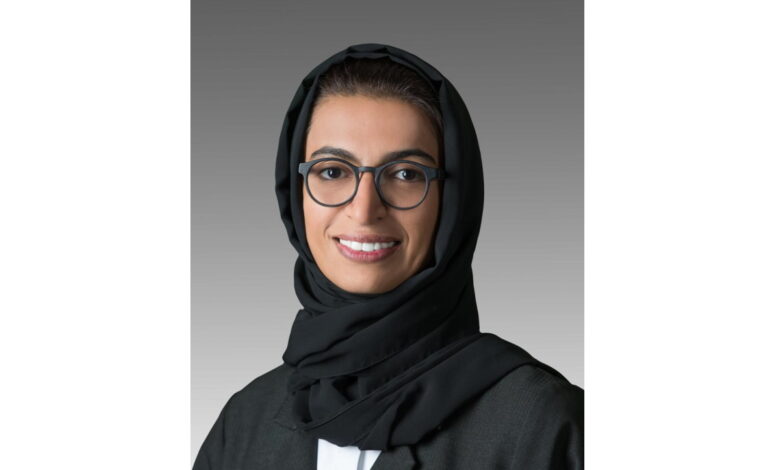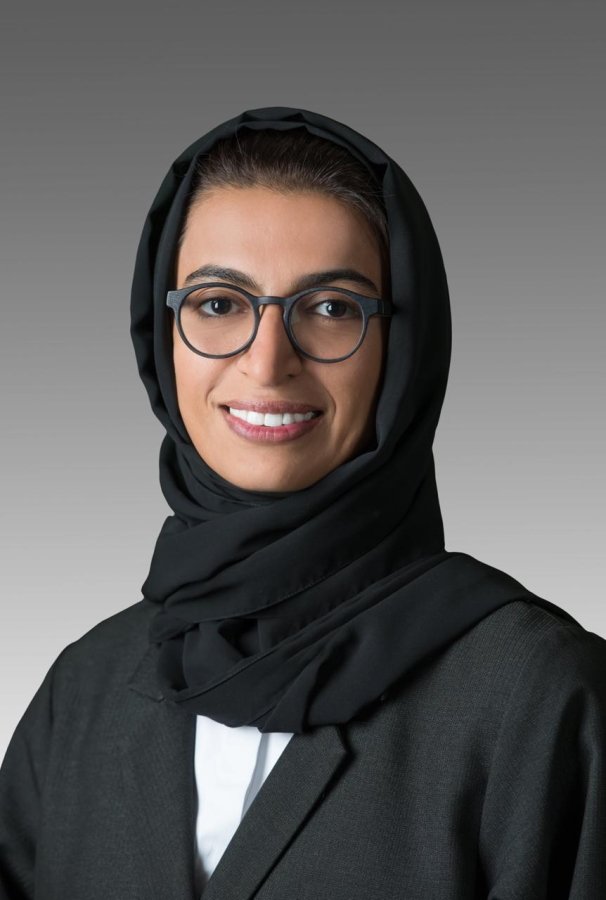
Her Excellency Noura Al Kaabi:
- The strategy consolidates the work of government agencies and their various projects and initiatives to strengthen the cultural and creative industries sector
- Our goal is to establish the UAE as a global gateway to creativity and a destination to harness creative energies and competencies
- We aim to raise the efficiency of cultural and creative industries to be among the top ten economic industries
- Increase the contribution of the cultural and creative industries sector to 5% of the national GDP

: Her Excellency Noura Bint Mohammed Al Kaabi, Minister of Culture and Youth, confirmed that the National Strategy for Cultural and Creative Industries, launched by His Highness Sheikh Mohammed bin Rashid Al Maktoum, Vice President and Prime Minister of the United Arab Emirates and the Ruler of Dubai yesterday establishes a new phase in the future of the creative economy and lays down strong foundation to enhance the contribution of the cultural and creative sector to achieve sustainable development. It aims to enhance the UAE’s position as a global destination to attract creatives and talents and enable an ecosystem ensuring sustainability, efficiency and quality.
In a press conference hosted by the Ministry of Culture and Youth today, Her Excellency revealed that the strategy is closely linked to the 10 Principles of the 50 that will chart the course of the UAE in the next 50 years and highlights the UAE’s pivotal role in empowering and inspiring creative human competencies and contributes to the UAE being an attractive destination for innovators and creators in the creative fields. Attract talent and innovators from around the world and provides the right environment to establish and develop their projects in the UAE.
“We have developed strategic indicators that we aspire to achieve in the next 10 years, as we will promote cultural and creative industries, increase their size and potential, to be among the top 10 economic industries in the country, as we will increase the contribution of the cultural and creative industries sector to 5% of GDP, raise the average income of workers in this sector, raise the average spending of families on cultural and creative goods and services, and We will double the number of enterprises operating in these industries, the number of jobs they provide, and we will increase the volume of exports of cultural and creative products and services.
Integrated framework
The National Strategy for Cultural and Creative Industries consolidates efforts at the federal and local levels to achieve the strategic objectives of institutions operating in this sector, in partnership with the government and private sectors, educational institutions and public interest institutions. The Ministry of Culture and Youth works through an integrated working system comprising several government agencies to implement this strategy in accordance with clear agendas to build a modern creative economy. The Ministry of Culture and Youth has partnered with several Federal partners to implement this strategy, these partners include Ministry of Education; Ministry of Economy; Ministry of Community Development; Ministry of Industry and Advanced Technology; Ministry of Human Resource and Emiratisation; and Federal Competitiveness and Statistics Center.
At the local level each of the seven emirates is represented by governing bodies such as Department of Culture and Tourism Abu Dhabi; Dubai Culture; Sharjah Department of Culture; Department of Antiquities and Museums – Ras Al Khaimah; Department of Tourism and Archeology – Umm Al Quwain; Department of Tourism Development – Ajman; and Fujairah Culture and Media Authority.
Definition of cultural and creative industries
According to the Ministry of Culture and Youth, UAE’s CCI consist of the ideation, creation, production, distribution, and dissemination of goods and services of creative expression and cultural preservation that generate and sustain socio-economic impact.
These comprise six main sectors including cultural and natural heritage, books and press, performing arts and celebration, audiovisual and interactive media, visual arts and crafts and design and creative services, and are further divided into more than 25 sub-sectors.
This strategy is based on a clear vision aimed at increasing the socioeconomic impact and value of the cultural and creative industries sector in the UAE. This includes several criteria, including the sector’s contribution to the GDP; the number of enterprises and their classification in terms of size; the number of job opportunities provided by the sector in relation to the total job opportunities in the country; the average spending of families on goods and services related in the field, and the return on investment in the sector. It will positively impact the economic and social agenda of the nation and position it among the leading countries on the global cultural and creative industries map.
To achieve these goals, the strategy has 40 initiatives across three main segments covering: talents and creatives; professionals and business environment, and enablement of the business environment. These include 16 initiatives aimed at talents and creatives; 10 initiatives for professionals and the business environment; and 14 initiatives for enabling the business environment.
The strategy is central to the development of the cultural and creative sector in the country and is closely linked to the ten principles of the 50 that will chart the strategic course of the country over the next five decades. It contributes to building the best and most active economy in the world by investing in human capital and attracting talent. It also strengthens the global reputation of the UAE while enriching the UAE’s core values of openness, tolerance, and national identity.
A first-of-its-kind in the Arab and Gulf region, the strategy strengthens the UAE’s position on the global cultural creativity map and enhances its position on global competitiveness indices. It underlines the pivotal role of the UAE in empowering and inspiring creativity. It bolsters the UAE’s position as an attractive destination for creative innovators from around the world, by cultivating a thriving ecosystem for talents and innovators to establish and develop their innovative projects in the UAE.
Key objectives of the Strategy
The strategy aims to promote the cultural and creative sector and empower the creatives and talents working to secure a place among the top ten industries in the nation. It works to increase the contribution of the sector to 5% of the national GDP over the next decade.
The strategy aims to double the number of enterprises operating in the sector in addition to the number of jobs they provide, while raising the average income of its employees the average spending of families on cultural and creative goods and services and increasing the volume of exports of cultural and creative products and services.
World Conference on Creative Economy
The launch of the National Strategy for Cultural and Creative Industries coincides with the International Year of Creative Economy for Sustainable Development announced by the United Nations 2021. The World Conference on Creative Economy (WCCE 2021) which is organized by the Ministry of Culture and Youth will be hosted by the UAE from December 7-9, 2021 at the Dubai Exhibition Centre at Expo 2020 Dubai under the theme ‘Inclusively Creative: Cultivating the Future’.
The Ministry of Culture and Youth will host thought leaders, thought-leaders, game-changers and creative minds to from around the world.
The conference, which concludes the International Year of Creative Economy, will focus on six themes that collectively define the future of the global creative economy including: Education Unleashed, Reworking Work, Technology Transformation, Elevating the Media & Communications Landscape, Future Sustainable, and Inclusivity & Diversity. WCCE 2021 brings together different stakeholders from the creative economy to help build on inclusive and human-first foundations.
Participants will include Her Highness Sheikha Latifa bint Mohammed bin Rashid Al Maktoum will discuss how greater accessibility into the creative economy can be achieved, locally and regionally, and Sheikha Bodour bint Sultan Al Qasimi who will address the topic of strengthening humanity through books, while Her Excellency Sheikha Mai Bint Mohammed Al-Khalifa, President of the Bahrain Authority for Culture and Antiquities will speak about achieving sustainable cultural tourism for environmental, social and economic prosperity.
Her Excellency Sheikha Al Zain Sabah al Naser El Sabah, Chairperson and CEO of National Creative Industries Group KSCC, will also discuss urban planning and placemaking for the cultural and creative sector. Additionally, Audrey Azoulay, the Director-General of UNESCO, will address in her opening speech the pivotal role of the creative economy in achieving UNESCO’s sustainable development goals.
Among the distinguished speakers will also be His Excellency Abdulla Bin Touq Al Marri, UAE Minister of Economy and Dr. Ahmad Belhoul Al Falasi, Minister of State for Entrepreneurship and SMEs, who will discuss their vision on the importance of the creative economy and the support the government extends to for SME’s.
Another influential thought leader to look out for, is John Howkins, British author and leading strategist on creativity and innovation, whose session, entitled ‘Wider Perspectives’, will discuss how maximising cross-sector collaboration across the creative economy is the key to unlocking untapped values.
Within the theme of ‘Inclusivity and Diversity’ a session hosted by Malcolm Gladwell, author of five New York Times bestsellers, geared towards the power of purpose and passion for independent creatives, will offer practical insights around the factors that are fundamental to a meaningful and sustainable career as an independent creative. WCCE 2021 will also hear from Glenn Lowry, Director of the Museum of Modern Art (MoMA) in New York City about MoMas ambitions behind its digital strategy, and how this provides flexibility in scaling collections to ensure accessibility to wider audiences.





